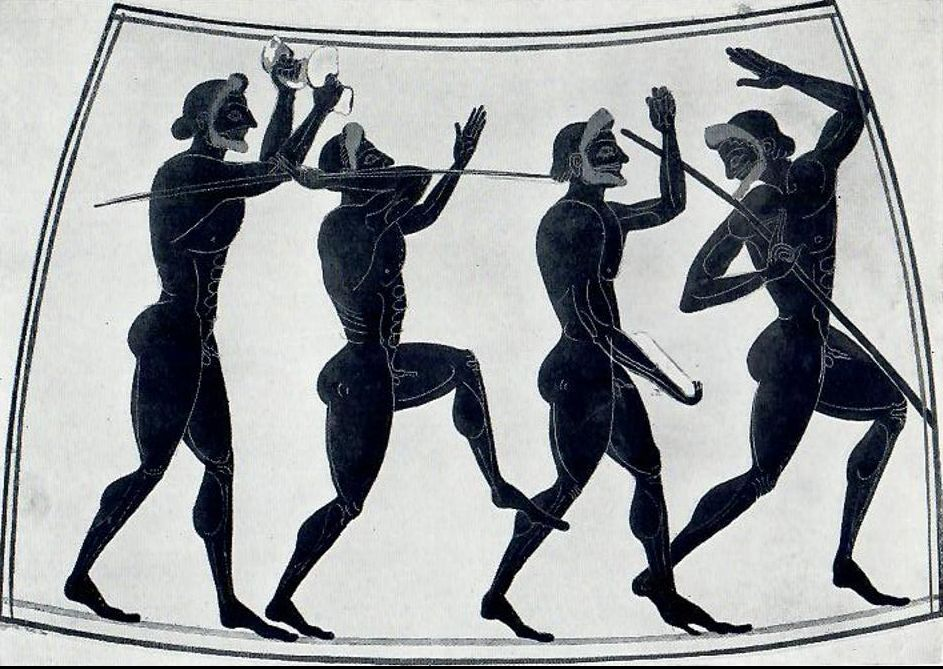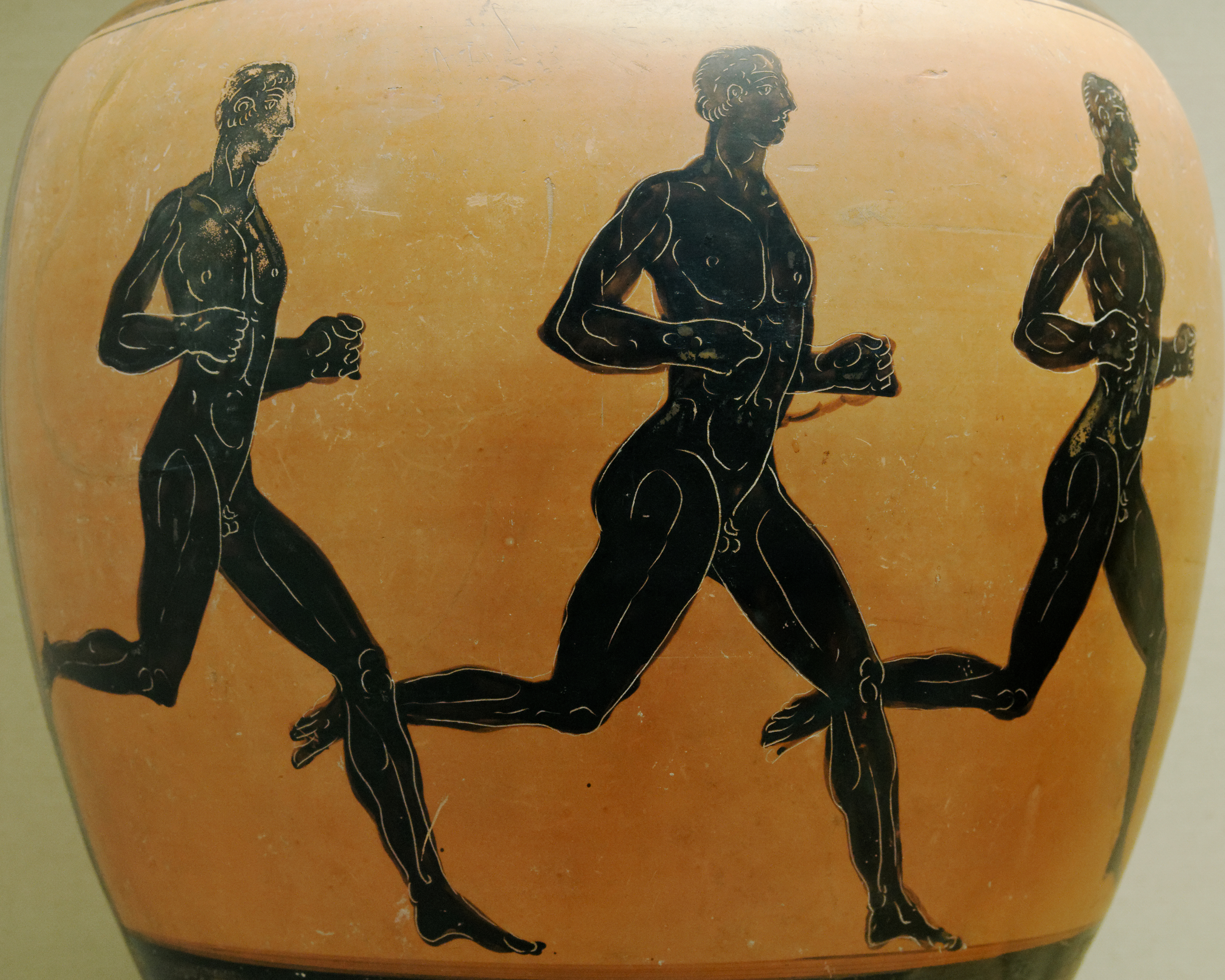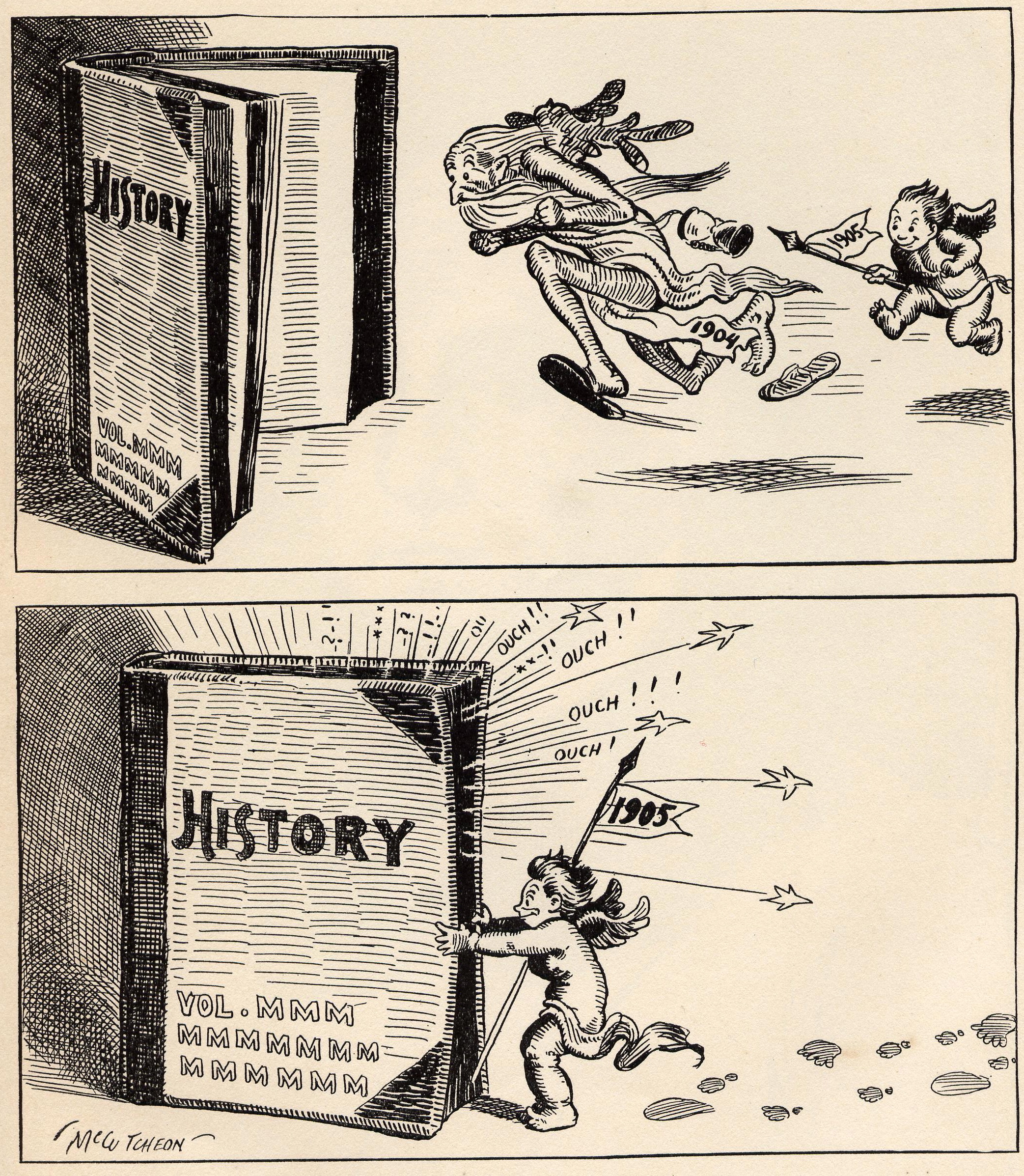|
Akilles Järvinen
Akilles "Aki" Eero Johannes Järvinen (19 September 1905 – 7 March 1943) was a Finnish decathlete. He competed at the 1928, 1932 and 1936 Olympics and won two silver medals, in 1928 and 1932; he served as the Finnish flag bearer at all three games. He also won a European silver medal in the 400 m hurdles in 1934. Järvinen was one of Finland's most versatile athletes of his era. At the national level, his decathlon records are still competitive, and if the current decathlon points tables had been used, Järvinen would have won the gold medal at the 1928 and 1932 Olympics. Järvinen died in 1943 when his VL Pyry trainer aircraft crashed during a test flight in World War II. His younger brother Matti was an Olympic champion and 10-time world-record breaker in javelin throw. His elder brother Kalle was an Olympic shot putter, whereas their father Verner won one gold and two bronze Olympic medals in the discus throw The discus throw (), also known as disc throw, is a track ... [...More Info...] [...Related Items...] OR: [Wikipedia] [Google] [Baidu] |
Jyväskylä
Jyväskylä () is a city in Finland and the regional capital of Central Finland. It is located in the Finnish Lakeland. The population of Jyväskylä is approximately , while the Jyväskylä sub-region, sub-region has a population of approximately . It is Finland's most populous Municipalities of Finland, municipality, and fifth most populous List of urban areas in Finland by population, urban area. Jyväskylä is located about northeast of Tampere, the third largest city in Finland; and about north of Helsinki, the national capital. The Jyväskylä sub-region includes Jyväskylä, Hankasalmi, Laukaa, Muurame, Petäjävesi, Toivakka, and Uurainen. Other neighbouring municipalities of Jyväskylä are Joutsa, Jämsä and Luhanka. Jyväskylä is the largest city in the Central Finland and Finnish Lakeland region. Jyväskylä was one of the fastest growing cities in Finland during the 20th century; in 1940, there were only 8,000 inhabitants in Jyväskylä. Elias Lönnrot, the auth ... [...More Info...] [...Related Items...] OR: [Wikipedia] [Google] [Baidu] |
Javelin Throw
The javelin throw is a track and field event where the javelin, a spear about in length, is thrown as far as possible. The javelin thrower gains momentum by running within a predetermined area. Javelin throwing is an event of both the men's decathlon and the women's heptathlon. History The javelin throw was added to the Ancient Olympic Games as part of the pentathlon in 708 BC. It included two events, one for distance and the other for accuracy in hitting a target. The javelin was thrown with the aid of a thong (''Amentum, ankyle'' in Greek) that was wound around the middle of the shaft. Athletes held the javelin by the ''ankyle'', a leather strap around the shaft, so when they released the javelin, the unwinding of the thong gave the javelin a spiral trajectory. Throwing javelin-like poles into targets was revived in Germany and Sweden in the early 1870s. In Sweden, these poles developed into the modern javelin, and throwing them for distance became a common event ther ... [...More Info...] [...Related Items...] OR: [Wikipedia] [Google] [Baidu] |
Finnish Decathletes
Finnish may refer to: * Something or someone from, or related to Finland * Culture of Finland * Finnish people or Finns, the primary ethnic group in Finland * Finnish language, the national language of the Finnish people * Finnish cuisine See also * Finish (other) * Finland (other) * Suomi (other) Suomi means ''Finland'' in Finnish. Suomi may also refer to: *Finnish language Finnish (endonym: or ) is a Finnic languages, Finnic language of the Uralic languages, Uralic language family, spoken by the majority of the population in Finla ... * {{disambiguation Language and nationality disambiguation pages ... [...More Info...] [...Related Items...] OR: [Wikipedia] [Google] [Baidu] |
Sportspeople From Vaasa Province (Grand Duchy Of Finland)
An athlete is most commonly a person who competes in one or more sports involving physical strength, speed, power, or endurance. Sometimes, the word "athlete" is used to refer specifically to sport of athletics competitors, i.e. including track and field and marathon runners but excluding e.g. swimmers, footballers or basketball players. However, in other contexts (mainly in the United States) it is used to refer to all athletics (physical culture) participants of any sport. For the latter definition, the word sportsperson or the gendered sportsman or sportswoman are also used. A third definition is also sometimes used, meaning anyone who is physically fit regardless of whether they compete in a sport. Athletes may be professionals or amateurs. Most professional athletes have particularly well-developed physiques obtained by extensive physical training and strict exercise, accompanied by a strict dietary regimen. Definitions The word "athlete" is a romanization of the , ''at ... [...More Info...] [...Related Items...] OR: [Wikipedia] [Google] [Baidu] |
1943 Deaths
Events Below, the events of World War II have the "WWII" prefix. January * January 1 – WWII: The Soviet Union announces that 22 German divisions have been encircled at Stalingrad, with 175,000 killed and 137,650 captured. * January 4 – WWII: Greek-Polish athlete and saboteur Jerzy Iwanow-Szajnowicz is executed by the Germans at Kaisariani. * January 10 – WWII: Guadalcanal campaign, Guadalcanal Campaign: American forces of the 2nd Marine Division and the 25th Infantry Division (United States), 25th Infantry Division begin their assaults on the Battle of Mount Austen, the Galloping Horse, and the Sea Horse#Galloping Horse, Galloping Horse and Sea Horse on Guadalcanal. Meanwhile, the Japanese Seventeenth Army (Japan), 17th Army makes plans to abandon the island and after fierce resistance withdraws to the west coast of Guadalcanal. * January 11 ** The United States and United Kingdom revise previously unequal treaty relationships with the Republic of China (1912–194 ... [...More Info...] [...Related Items...] OR: [Wikipedia] [Google] [Baidu] |
1905 Births
As the second year of the massive Russo-Japanese War begins, more than 100,000 die in the largest world battles of that era, and the war chaos leads to the 1905 Russian Revolution against Nicholas II of Russia (Dmitri Shostakovich, Shostakovich's Symphony No. 11 (Shostakovich), 11th Symphony is subtitled ''The Year 1905'' to commemorate this) and the start of Revolution in the Kingdom of Poland (1905–07), Revolution in the Kingdom of Poland. Canada and the U.S. expand west, with the Alberta and Saskatchewan provinces and the founding of Las Vegas. 1905 is also the year in which Albert Einstein, at this time resident in Bern, publishes his four Annus Mirabilis papers, ''Annus Mirabilis'' papers in ''Annalen der Physik'' (Leipzig) (March 18, May 11, June 30 and September 27), laying the foundations for more than a century's study of theoretical physics. Events January * January 1 – In a major defeat in the Russo-Japanese War, Russian General Anatoly Stessel su ... [...More Info...] [...Related Items...] OR: [Wikipedia] [Google] [Baidu] |
James Bausch
James Aloysius Bernard Bausch (March 29, 1906 – July 9, 1974), also known as "Jarring Jim", was an American athlete who competed mainly in the decathlon. Bausch grew up in and attended school in Garden Plain, Kansas, before finishing and graduating from Cathedral High School in Wichita, Kansas, and went to college at the University of Kansas, where he starred in football and basketball. He competed for the United States in the 1932 Summer Olympics held in Los Angeles in the decathlon. Bausch only placed fifth after the first day, but splendid performances in the discus throw and pole vault helped him to build an insurmountable lead and win the gold medal over the heavily favored Finnish athlete Akilles Järvinen. Bausch played college football at the Municipal University of Wichita, now known as Wichita State University, and the University of Kansas. He was inducted into the College Football Hall of Fame in 1954. Bausch also played professional football as a halfback in the ... [...More Info...] [...Related Items...] OR: [Wikipedia] [Google] [Baidu] |
Decathlon
The decathlon is a combined event in athletics consisting of 10 track and field events. The word "decathlon" was formed, in analogy to the word "pentathlon", from Greek δέκα (''déka'', meaning "ten") and ἄθλος (''áthlos'', or ἄθλον, ''áthlon'', meaning "contest" or "prize"). Events are held over two consecutive days and the winners are determined by the combined performance in all. Performance is judged on a points system in each event, not by the position achieved. The decathlon is contested mainly by male athletes, while female athletes typically compete in the heptathlon. Traditionally, the title of " World's Greatest Athlete" has been given to the person who wins the decathlon. This began when Gustav V of Sweden told Jim Thorpe, "Sir, you are the world's greatest athlete" after Thorpe won the decathlon at the Stockholm Olympics in 1912. The event is similar to the pentathlon held at the ancient Greek Olympics,Waldo E. Sweet, Erich Segal (1987). Spor ... [...More Info...] [...Related Items...] OR: [Wikipedia] [Google] [Baidu] |
Paavo Yrjölä
Paavo Ilmari Yrjölä (18 June 1902 in Hämeenkyrö – 11 February 1980 in Vilppula), also known as the ''Bear of Hämeenkyrö'' (''Hämeenkyrön karhu''), was a Finnish track and field athlete who won the gold medal in the decathlon at the 1928 Summer Olympics. He also competed in shot put and high jump at the same Games, and in decathlon in 1924 and 1932, but less successfully. In the 1928 Olympics, he had to rerun the 100 m hurdles as the fourth hurdle was placed incorrectly in the first run. Finland took the top two spots in the decathlon that year with Yrjölä taking the gold (with a world record) and Akilles Järvinen the silver. In his years of competing, Yrjölä set three officially ratified world records: 7820 points in 1926 (6460 according to the current scoring tables and with standard manual timing corrections of 0.24 seconds for 100 metres and 110 metre hurdles, 0.14 seconds for 400 metres and nothing for 1500 metres), 7995 points in 1927 (6586) an ... [...More Info...] [...Related Items...] OR: [Wikipedia] [Google] [Baidu] |
Discus Throw
The discus throw (), also known as disc throw, is a track and field sport in which the participant athlete throws an oblate spheroid weight (object), weight called a discus in an attempt to mark a further distance than other competitors. It is an classical antiquity, ancient sport, as demonstrated by the fifth-century-BC Myron statue ''Discobolus''. Although not part of the current pentathlon, it was one of the events of the Ancient Olympic pentathlon, ancient Greek pentathlon, which can be dated back to at least 708 BC, and it is part of the modern decathlon. History The sport of throwing the discus traces back to it being an event in the Ancient Olympic Games, original Olympic Games of Ancient Greece. The discus as a sport was resurrected in Magdeburg, Germany, by gymnastics teacher Christian Georg Kohlrausch and his students in the 1870s. Organized men's competition was resumed in the late 19th century, and has been a part of the modern Summer Olympic Games since the fi ... [...More Info...] [...Related Items...] OR: [Wikipedia] [Google] [Baidu] |





